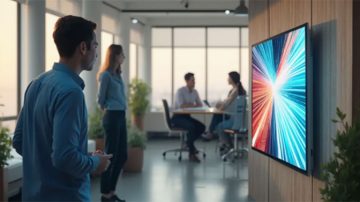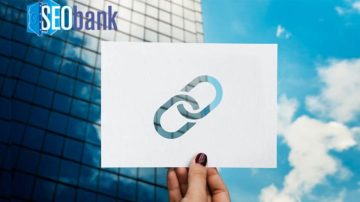If you get someone onto your page, that is a sign of hard work. You have put out the content, you’ve got the click, here they are, and then in then in the blink of an eye, poof, they’re gone. This is something that we see all of the time, people coming to us for help with their websites and content, not understanding why people are doing a U-Turn and heading for the hills within seconds. We are touching on the Top ten reasons why visitors might be making tracks.
1. You’re sending paid traffic to your homepage
Short visits, bounce rates? Sometimes, when the visit is extra short, it’s not an actual person, but a bot or crawlers stopping by, these are not to be worried about.
However, they are misleading when included in your stats, simply just make sure these aren’t counted in the software options.
2. You’re sending paid traffic to your homepage
We have let you know before that it’s vital to create landing pages that are dedicated to your individual keywords, especially digital as campaigns.
If you are sending your paid traffic to your homepage or to any other page that isn’t specifically targeted. Then technically you are sending people to something that they are not looking for. You are effectively encouraging higher bounce rates.
Paid traffic converts well if you have a single focus on the page they land on, a conversion goal, and a match between the paid advert you are running and the place that they have landed.
Try a single call to action – One focus!
3. Loading Time
The user experience (UX), something that Google looks at closely. Since they were able, mobile visitor traffic has greatly surpassed the amount of desktop traffic. Users have grown very accustomed to speed, high-speed internet, a world of information available to them with just the click of a button.
If the loading time on your page is too long (more than 3 seconds), there is a great chance that you will see them quickly leave and continue on their search.
There are so many ways to optimise your site for faster loading times. When you have your site optimised, you are not only improving user experience and chances of conversion, but you are also getting Google’s attention as they rank for this factor.
Optimizing your images and minifying code are only a couple of things that can help you in this area. There are so many things that can be done and it’s definitely worth your time – or our time if you’re running short, we specialise in this area.
4. Light’s, Camera, Call To Action
If your website visitors are anything like me then they have an extremely short attention span. A scarce resource in the world of the web. When someone lands on your page, if they do not find what they are looking for immediately, chances are they are going to leave and find another website to spend their money on that has a clear call to action.
Create a single call to action button on your website, guide your visitors around your website just as you would welcome them into, and guide them through a brick and mortar store.
Just putting a generic call to action buttons on your website is simply not enough anymore. Anyone can do that, tailored web design that takes all factors into consideration on the customer journey is key to higher conversion rates.
High converting call to action buttons:
- Ensure it is contrasting to the rest of your page
- Size matters – Make it big and easy to locate
- The text matters: Tell them what will happen when they press the button
- Make it clear what happens next, ‘Learn More’, ‘Buy Now
Clear, concise instruction = Higher rates of conversion and lower bounce rates.
5. The Content Was Overwhelming
Research that has been carried out has let us know that the consumption of information by users when they land on a website is frantic.
So often users are hit with too much information. Making your website appealing and easy to digest should be a top priority. Users pay most attention to:
- Headings
- Bold Text
- Bulleted Lists
- Links
Use brief paragraphs, well punctuated, and include lists. This will help with engagement without overwhelming the user and prompting them to leave.
6. Irrelevant Content
Google’s algorithm is somewhat of a God in SEO. Google now not only picks up on the keywords, but it picks up on a user’s intent – how they are phrasing it.
“How to”, “Buy….Belfast”, when these precede the keywords, Google knows what the user wants. So really you want to be optimizing your content, not only just for the keywords, but for intent as well for the best results.
7. Popup’s And Chatbots
Spam, spam spam. Just as much as they can help catch a user’s attention, using the likes of chatbots and popups can also annoy your users. Use them sparingly and make sure they are not invasive to the experience of your site. Don’t just think about the look of a popup, but also think about the timing. If you go to a website and then immediately have a pop up in your face, what are the chances of you remaining on that site for any length of time?
Again with this, watch your session replays, put a pop up on one page, and then measure and monitor what your users are doing. If they are going for it, ignoring it, or exiting out of it all together. Give the users what they want!
8. Not Optimized For Mobile
Your website could be the best, most engaging desktop, but if it doesn’t adapt to mobile devices, not only will your users leave, but Google will not take very kindly. Google gives preference in the SERPs to mobile-friendly websites.
9. The Navigation Was Confusing
The adaptation of a site to mobile means more than just fitting it to a smaller screen. Sometimes it means removing navigational buttons or putting them into a different form.
When you are optimising your site for mobile, it can help you to gain an understanding of what might not be essential on your desktop webpage. Removing clutter and simplifying, something less is more.
Make key pages of your site very easy to find, create a clear call to action, always guide your customers.
10. Found What They Were Looking For
A short visit isn’t always considered a bad thing. Sometimes the user can be on the search for a way to contact you, an email, phone number. In this case, a short visit to your contact page can be considered a big win.
Take the guesswork out of what your visitors are doing when they visit your website, as always, use the tools that are available to you to start trying to gauge and adapt your website for the best user experience possible and to get into Google’s good books.
About the author:
We are also experts in getting targeted traffic to your site, so not only does your website look and function great, but with our SEO plans you will have a steady supply of potential customers finding your site via organic search.
We pride ourselves on ‘outcaring’ the competition by building meaningful connections with your audience through SEO. This way you’ll get the best ROI.





